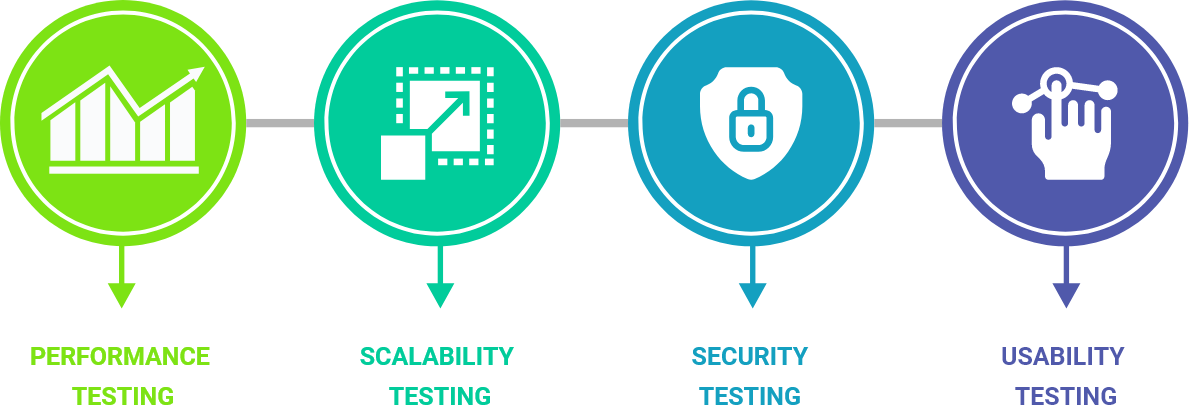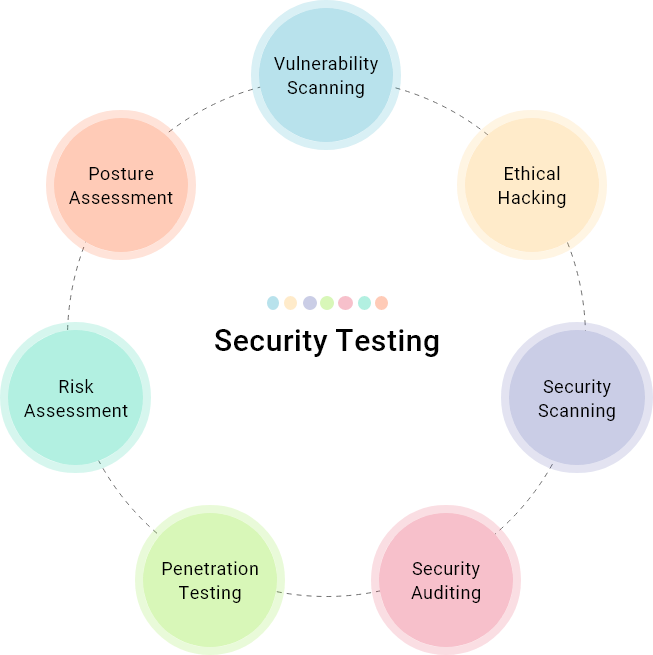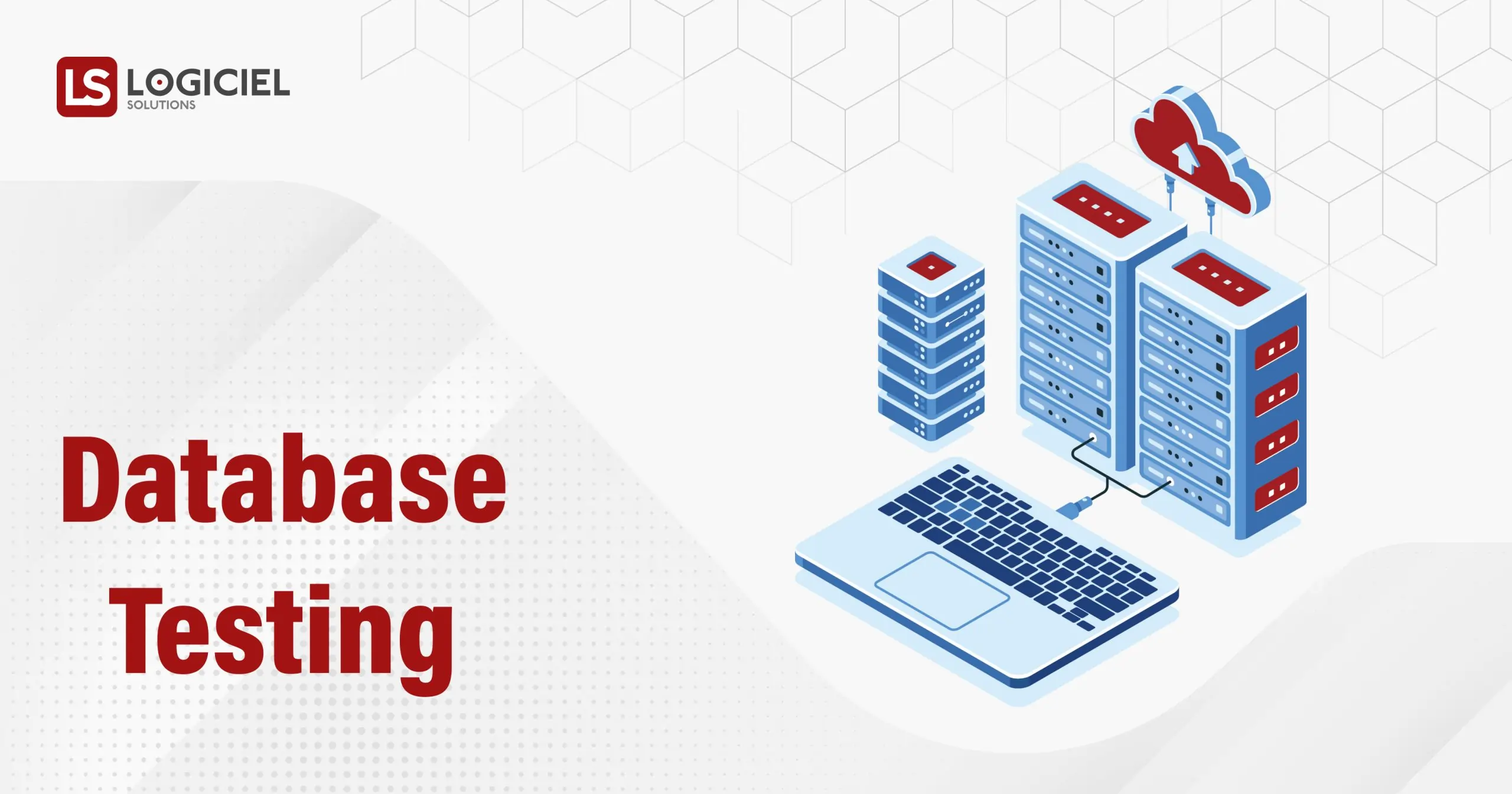The evolution of modern and technology-driven management has provided the corporate world with various new dimensions to do business and software development is one such fine approach and what makes it even better is Testing. Errors could occur at any stage of the product development life cycle and lead to major damage like system failure If not determined on time hence, rigorous testing is critical.
Now, If you are among those who think that Testing is all about testing the software application’s functional aspects like unit and interface then, this article is for you. It will give you a clear understanding of what non-functional testing is, why It is as Important as functional testing and what are the risk factors of avoiding it. Let’s start:
What is Non Functional Testing?
The term non-functional testing refers to the testing of a system or software application for all its non-functional requirements like performance, usability, reliability, response time, security, etc. Basically, It analyzes all those system attributes that functional testing doesn’t.
Functional and Non Functional Testing Comparison
Software Testing is mainly categorized into two parts Functional and Non- Functional and both of them have their own significance. Let’s draw a clear distinction between them:
| Functional | Non-functional |
|---|---|
| It tests each function or feature of the software. | It tests non-functional aspects like performance, usability & reliability. |
| It is usually done manually. | It is usually automated. |
| It depends on the customer’s requirements. | It depends on the customer’s expectations. |
| It validates software actions. | It validates software performance. |
| Defining functional testing requirements is easy. | Defining non-functional testing requirements is difficult. |
| It checks what the software does. | It checks how the software works. |
While functional testing ensures the smooth performance of all the major features or functions, non-functional testing ensures the usability, reliability, and security of an application. Both these testing methods are used to test the different aspects of a software system hence, are equally important.
Objectives of Non-functional Testing:
Other than testing all the non-functional facets of a software such as availability, performance, accessibility, security, usability, and maintainability, non-functional testing has the following objectives:
- Identifies the problems of product behavior and improves actions.
- Verifies all the quality attributes that are crucial for the operation of a system.
- Determines whether a product or system meets a defined set of standards.
Types of Non-functional Testing:

1. Performance Testing
Performance testing is an essential part of software testing that is performed to determine the scalability, reliability, resource usage, speed, response or load time of a software application under certain conditions of use. Basically, this test diagnoses and eliminates the performance related issues of a product or system under varying usage (stress) levels.
Why Is It Used?
In today’s digital world when we have quick access to almost everything, why would anyone wait for the software to load or respond slowly? Hence, performance testing becomes critical to validate the fundamental features of the software and avoid issues like slow loading and poor usability.
It also unveils the bottlenecks causing software performance issues and ensures that the software is stable and able to handle load under extreme conditions like high user traffic.
Moreover, performance testing is important because It enables businesses to gauge their software’s security, stability, scalability, speed, and accuracy. The ultimate benefits of software performance testing are far reaching for all the businesses.
Performance Testing Metrics
Following are some basic parameters that can’t be avoided while running software performance test:
- Response Time:
It refers to the time an application takes to load and is among the crucial parameters of performance testing. - Memory Use:
Memory use validation has a significant role to play as It stands for the amount of physical memory available to processes on a system or computer. - Committed memory:
It is important as it depicts the amount of used virtual memory. - Memory Pages:
It should be verified to resolve hard page faults - Throughput:
It needs to be verified to view the number of transactions completed while running a load test. - Bandwidth:
Bandwidth validation is important to check the bits per second used by a network interface.
Different Types of Performance Testing:

- Load Testing:
It is performed to measure the performance of a software under normal and anticipated peak load conditions. It enables testers to determine performance bottlenecks, check which element is causing degradation and accordingly ensure smooth functioning of the software before deployment. - Stress Testing:
It is used to test stability and reliability of the software or system. And, finding the breaking point of the application is its main focus. While determining the robustness and error handling capabilities under extreme workloads, stress testing also ensures that the system doesn’t fail or crash under crunch situations. - Endurance Testing:
It is a kind of software capacity testing where testers check how the software is going to behave under sustained use. Endurance test ensures that the software application is capable enough to take increased load without any major downfall in response time. - Spike Testing:
The job of spike testing is to test how a software will behave when the load is suddenly increased or decreased to an extreme extent. The objective of performing this test is to check the software’s reaction to instant load spike and determine quick recovery after that. - Volume Testing:
Also known as flood testing, volume testing is subjected to an immense volume of data. It is performed to analyze the software application’s performance under varying database volumes, most commonly by enlarging the volume of data in the database.
Performance Testing Challenges
Performance testing is a great way to ensure product security, quality and scalability. While it offers various benefits, It also comes with a number of challenges and here we are sharing some of the major ones with you:
- Lacking to create a powerful test strategy
Successful execution of any plan relies on an effective strategy, similarly having a comprehensive test strategy or design is the base of getting the best test results. Creating such a test strategy isn’t an easy task, it needs a lot of effort, creativity and time. - Wrong performance testing tools
It is important that a software gets thoroughly tested with the right testing processes and tools before it gets live in the market. But, what if the tester chooses the wrong performance testing tools to run the tests, It will directly affect the software’s competence. Hence, testers need to take the tool selection process into consideration. - Deficiency of Proper Testing Scenario & Resources
It is amongst the most common challenges of this kind of testing. Performance testing is usually done under reasonable scenarios using some specific tools but, lots of times companies lack in providing proper resources and environments to the testers to execute the test. - Test Result Evaluation
No doubt, It is the trickiest challenge a testing associate encounters during performance testing. Analyzing multiple performance result reports needs a good understanding of the system and a keen eye to pinpoint the errors.
Performance Testing Tools:
Performance testing tools play a significant role in determining the reliability, scalability, security, speed, and usability of the software. Having a good amount of judgement to pick the best tools for the testing processes is critical.
Here we have got a hand-picked list of best Performance Testing Tools for you:
- LoadRunner
LoadRunner is a widely used performance testing tool which enables testers to test and measure software behaviour and performance under load. - WebLOAD
It is an effective load testing tool that combines performance, scalability, and integrity as a single process for software applications verification. - Silk Performer
It is an enterprise-class solution for testing software performance, load, and stress. Silk Performer has great potential to maintain the application and server’s uptime under high usage scenarios. - LoadNinja
It is a leading cloud-based load and performance testing platform for web apps and web services. LoadNinja is an effortless approach to record and replay tests instantly. - SmartMeter.io
It is a multi-platform load and performance testing tool that features everything from advanced scenario recorder, user friendly distributed mode, one-click test reports to acceptance criteria.
2. Scalability Testing
Scalability testing refers to the testing process of a software or system that measures how it will perform when the number of user requests are scaled up or down. It enables companies to check their server’s ability to handle an estimated boom in user traffic, data volume, etc.
Let’s make a quick comparison between performance testing and scalability testing:
While performance testing analyzes how a software application will respond to various load levels and determines the point at which a server may fail due to sudden spikes of usage, scalability testing analyzes how well a software app scales up or down to ensure a consistent user experience despite the number of simultaneous users.
Why is it Important?
While determining end-user experience under the projected load, and server-side robustness and degradation, scalability testing also:
- Suggests what actions need to be taken in advance to rectify the potential issues.
- Makes your software application flawless and easily scalable.
- Helps to set the user limit of the web application or software system.
Scalability Testing Attributes:
Scalability testing attributes are the same as performance but their purpose of use here is different. In scalability, they are not metrics that define the performance of a system, despite the fact that they are scaling parameters solely used for scaling purposes. It means, In Scalability Testing the same performance attributes get tested to ensure maximum scalability:

For Example :- Scalability testing means having Plans for good system performance even after loads increase. It is highly recommended to keep this testing while maintaining the system or software to make things work properly even after huge requests to the system to execute given load is increasing as it grows in demand.
- Response Time
- Throughput
- Time
- CPU Usage
- Memory Usage
- Network Usage
3. Security Testing
Security testing determines all the potential vulnerabilities, threats, and risks in an information system and ensures that It protects the data from malicious attacks while maintaining the expected system functionality.
Why is it important?
While uncovering the system’s threats and vulnerabilities, software testing aims to determine all the possible risks that can lead to system failure. This testing helps developers to fix possible security issues and make sure that the system is free from the security risks and can not be exploited.
Going with the name, Security Testing ensures software’s security by determining:
- The risks and threats
- Measuring the potential vulnerabilities
- Preventing malicious attacks from intruders.
Furthermore, performing security tests avoid data loss and other serious security risks in the system.
Types of Security Testing:

- Vulnerability Scanning
It is an automated process of proactively scanning a system against security vulnerabilities. - Ethical hacking
It is an authorized approach to gain unauthorized access to a system and reveal vulnerabilities to the system owners. - Security Scanning
A scanning process that determines the network and system vulnerabilities and provides solutions to reduce those risks. - Security Auditing
It enables companies to test their Information system and overall security posture. Security testing is more like an internal testing process used by the organizations to find out their system’s security flaws. - Penetration testing
This testing is generally used by companies to augment their web application firewall (WAF) and determine possible vulnerabilities with attack simulation. - Risk Assessment
It is a great way to find out the security vulnerabilities or risks and eliminate them If possible, otherwise minimize their effects. - Posture Assessment
It helps companies to determine how resilient their overall security posture is and what it is lacking at.
Some Crucial Vulnerabilities
- Broken Authentication
Poor session management and poor credential management are two main weaknesses inherent in a software application that make the system vulnerable to unauthorized access by the hackers. - Security Misconfiguration
It is one of the most common security issues as it is really tough to implement all the security controls for a software application or server without errors. These insecure default configurations of the API servers allow hackers to exploit them. - Third-party Service Providers
Since outsourcing is cost-effective and convenient, companies leverage several third- party services for different business purposes and increase the risk of a data breach through these platforms. - Injection
Injection flaws enable hackers to have unauthorized access to private data through injecting malicious code in another server, mainly an interpreter using a flawed app. SQL, XML, LDAP, and Command Injection are some of the most common types of Injections flaws. - Sensitive Data Exposure
There are multiple reasons for sensitive data exposure like no encryption, weak encryption, software flaws or data being uploaded to an incorrect database. Such weakly protected data can be easily compromised by the hackers.
4. Usability Testing
Usability testing measures the degree to which a software application or system can be used and operated easily by the users. It tests different functionalities of the software application or website and determines its usability issues to evaluate the ease of accomplishing a task.
Why is it used?
Usability testing is mainly used to identify usability defects of an application and make it more friendly for the end-users. This test is easy to perform as It can be done either by the internal team or a small set of potential users.
These users check every segment or functionality of the system which is connected to the system usability and then share their feedback with the developers directly. It helps the designing team to work on the suggested usability issues and create a software application that is easy to use for the users and leads to product success.
Usability testing ultimately leads to Increased user satisfaction with the software application directly meeting the business goals.
Usability Testing Attributes

- Learnability
It helps you measure how effortlessly and quickly the visitors can learn the functionalities of your website. - Efficiency & Effectiveness
While efficiency measures “how quickly users can accomplish their goals using your website, effectiveness refers to how conveniently they can perform their tasks on the website. - Memorability and Retainability
With this attribute, the users who are coming back to your digital platform after an extended duration don’t need to find the information or details they’re looking for. - Error Rate
Making your website free from the usability errors, It determines how often the users would make mistakes and how easily they could get over those errors. - Satisfaction
Determining the ease of performing tasks on your website or software application, it leads you to an optimal user experience.
Risk Factors If Non-functional Testing is Ignored
When it comes to testing a software or website, functional testing is what most businesses are more focused on and non-functional testing is ignored until the very end. Let’s have a look at the risk factors of avoiding non-functional testing:
Thinking that non-functional testing is not a priority and can be performed later is what the biggest misconception businesses have!!
While functional testing validates the software system against the functional aspects, non-functional testing checks the non-functional requirements like performance, usability, security, scalability, etc. of a software application. Both the testing methodologies are critical to ensure the overall quality of any software application.
Ignoring non-functional testing may not show any side effects initially but, the risk is almost certain if your software application becomes popular. This is where you may become a target for hackers or you may encounter server failures due to heavy traffic on your portal.
As we don’t know what tomorrow brings for us, certainly you don’t know whether you’ll have a database breach in the upcoming time or maybe your software product will get viral and your system will fail to respond to the suddenly increased load because you didn’t make your server capable enough to bear such an uncertain load.
It’s difficult to judge the future but, preparing for that isn’t!!
Besides performance failures and data security risks, another great risk of ignoring non-functional testing is scalability complication. Enabling your software with an ability to grow or change with the users’ demands, scalability also leads you to lower maintenance costs and higher agility.
Not prioritizing scalability testing from the start could damage a brand to a level where no marketing can fix it later or If It does, then it is going to be a very expensive deal because it will ask for rebranding or re-designing of the product.
However, investing a bit more time and money upfront in your testing including functional and non-functional both could save you from all the extra efforts in the long run.
Non-functional testing isn’t just nice to have, It’s essential to outperform.
Following are the best examples of some dominant digital platforms empowered by functional and non-functional testing both:
- Google Search: Ease to Use, Quick Search Results, Outstanding Performance
- Mozilla Firefox/Chrome: Fast, Secure, Extendable
- iPhone/iOS: Fast, Appealing, Intuitive
- Uber: Convenient, Simple, & Scalable
Conclusion
Non-functional testing is as significant as functional and too important to neglect. As mentioned above a software application enforced with both functional and non-functional testing can benefit your business in different ways. Whether its performance, security, or scalability, non-functional testing has got all the essential quality segments covered to enhance the readiness of your application. Make it a part of your development process and transform your good software product into a great one.





